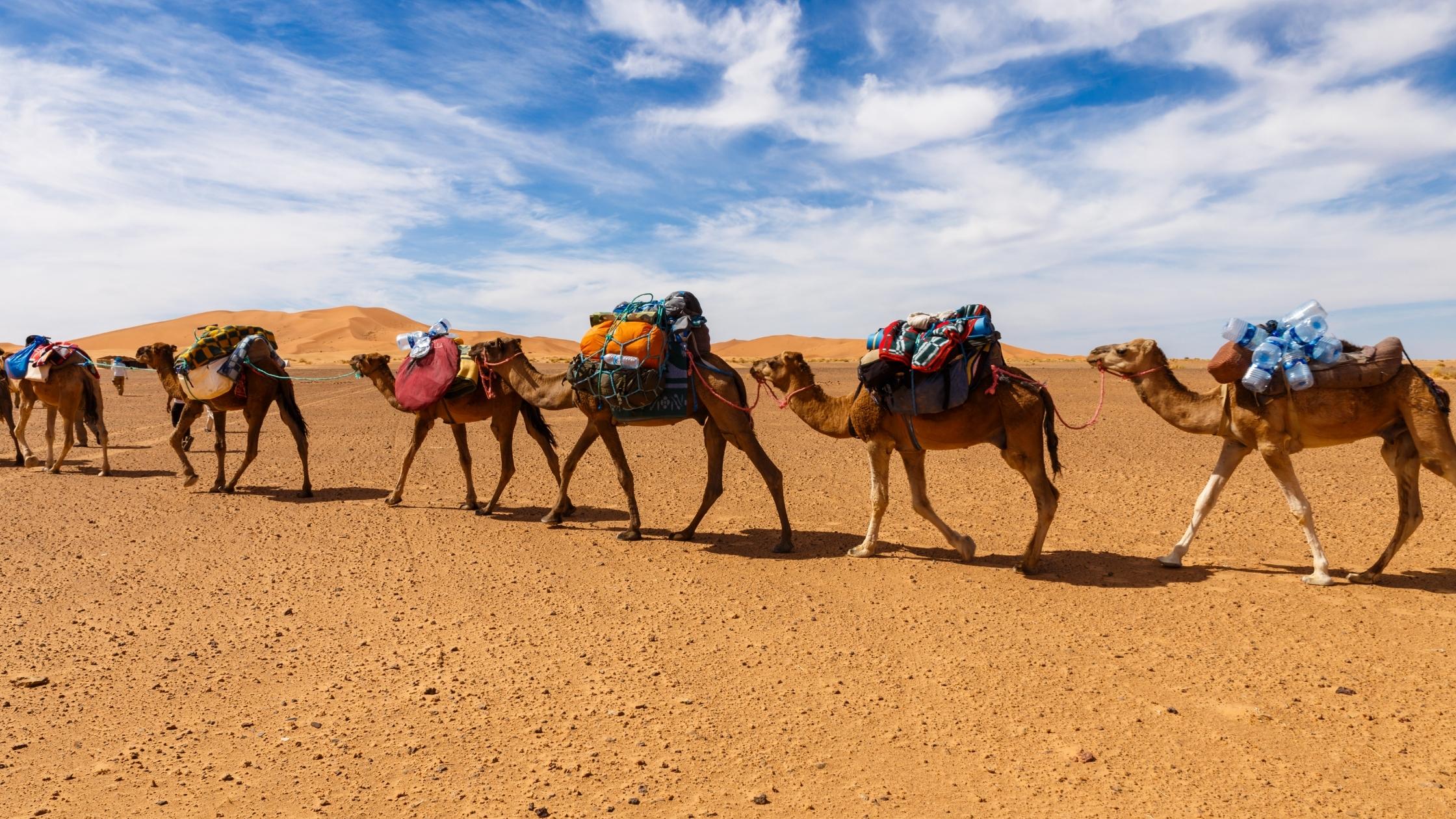Spices have been used to preserve food for millennia. From cinnamon to star anise, spices have also helped to influence cuisine around the world.
Traders, whether they travelled over land in caravans or on the sea in huge sailing vessels, have been the source of exotic spices around the world and their distribution through time. Some of the spices these traders carried were worth more than gold!

Let’s take a look at the spices of Morocco and the history of the spice trade in the area.
Since the northwest coast of Africa has seen its share of traders, colonists, and indigenous peoples, the food of Morocco has taken on a distinctive flavor and aroma, making it one of the world’s greatest cuisines.
Salt is a common ingredient used to preserve food on long voyages. But salted food can get, well, boring.
Enter spices! Travelers would add interesting flavors to their dishes, learning which were tasty and which were excellent to keep the food edible the longest.
The ports in Morocco became bustling hubs for spice trade. Because of the huge value of spices, Spanish, French, and Portuguese merchants hired guards to keep their inventory safe.
If you go to a Moroccan spice market, the first thing that you will notice is the aroma!

Most spices have a distinctive smell, and when they’re all mounded up on tables in a market, the odor can be intoxicating.
Moroccan cuisine uses fresh spices from many parts of the world. A favorite among cooks is the Ras el Hanout blend that can be used in recipes or just sprinkled on meats and vegetables before roasting. This popular mix contains over 12 different spices!
In addition to cooking, spices can also be used to dye fabric and thread and are part of the process weavers use to create intricate designs on clothes and the famous Berber carpets.
Let's take a look at some of the most famous spices found in Morocco
Saffron

The most expensive spice in the world, saffron comes from the stamen of the crocus flower. It takes about 75,000 flowers to create a pound of the spice, and the harvesting occurs over three weeks’ time. No wonder it’s so treasured!
Saffron is used in cooking and to dye cloth. It lends a deep yellow color to the end product, no matter how it’s used.
Turmeric

Another deep yellow spice is turmeric, which is sometimes called golden saffron. It doesn’t come from the flower of the plant though. It’s harvested from dried roots.
Turmeric also gives a yellow color to dishes and can be used as dye. In addition to tasting amazing in main dishes, side dishes, and desserts, it is also used as a dietary supplement some people say helps to reduce inflammation.
Black Pepper

A favorite around the world, this pungent spice comes from tiny flower buds and can be ground into recipes or over finished dishes. The buds can also be floated in simmering liquid to add the spicy flavor to any soup or broth.
Fenugreek

This spice comes from the seeds of the fenugreek plant. But it’s not “spicy” like black pepper. In fact, many desserts use fenugreek because it lends a sweet flavor to recipes.
Cumin

Sometimes called the Mexican spice, cumin seeds come from the coriander plant. The dried seeds are ground and added to Moroccan dishes as well as spice blends to lend a distinctive aroma and flavor to the local cuisine.
Cinnamon

Many recipes use cinnamon! From savory meat dishes to sweet treats and warm drinks to celebrate holidays, cinnamon is one of the most recognizable spices in the world.
It comes from the bark of a tree. The bark peels off in large sheets. Then the sheets are cut into manageable pieces. When the bark is cut, it rolls up! This is why when you buy cinnamon sticks, they’re rolled up like little scrolls.
Anise

There are two kinds of anise. One is a little seed from a plant in the parsley family and the other is the dried blossom of the anise tree called star anise.
They both have a licorice flavor and are used in many Moroccan dishes, either alone or ground into spice blends.
Paprika

Paprika is made from dried ground peppers and has a deep red color. This spice comes in both a mild and a hot flavor. Sometimes the peppers are smoked before grinding to give an even deeper flavor to the spice.
Sesame

These little seeds are added to all kinds of dishes from sweet to savory. One dessert recipe makes cakes of sesame seeds and honey that travelers have used for centuries as a snack on long journeys.
These are just a few of the spices that are grown in Morocco and used in everyday cooking and crafting.
Some of these spices originated in Africa while others were introduced via the spice routes from Asia and India. Moroccans have taken the wide variety of spices available from around the world and made them their own.
Moroccan dishes are very distinctive! You can try three local recipes from our Morocco box. You’ll find the spice blends right inside so you can eat2explore!







